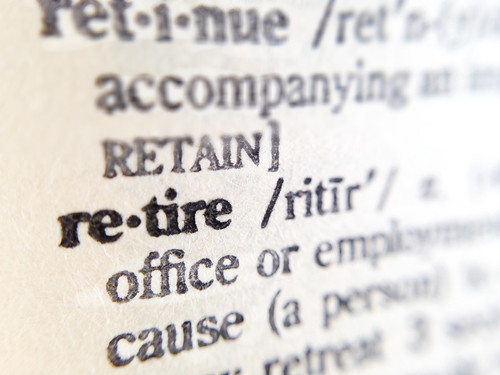A Guide to Retirement Planning
How To Plan for Retirement

Retirement investment planning steps can differ depending on a person’s financial goals. Here are a few general steps to take as you begin to think about retirement planning:
Create a Plan
The first step in our retirement plan guide is to create a plan. Creating a plan means considering your ideal age for retirement. You can’t collect Social Security benefits until you’re at least 62 years old, but waiting until you’re 67 allows you to maximize your benefits. Some people choose to retire before or after this age, which is a decision you’ll want to make for yourself and prepare for accordingly.
Regardless of when you aim to retire, it’s never too early to begin planning. While starting early has many advantages, starting anytime is better than taking no action at all.
Calculate Your Financial Goals
Consider your financial goals in your retirement. Calculate how much you think you’ll need for retirement. You can find a number of online calculators that allow you to input your monthly expenses and estimated costs . While Social Security can help offset some of the funds you’ll need for retirement, it doesn’t usually cover the full cost of expenses.
Some of your costs might be less than what you pay now. For example, you might pay off your student loans or mortgage by retirement.
Choose Your Investment Type
You can invest in your retirement in a variety of ways. The most common retirement planning method is contributing to a 401(k) through an employer. Even if a retirement account isn’t available through your employer, there are other options available. You’ll want to decide how hands-on or hands-off you want to be with your contributions.
Risk tolerance is also an important factor to consider. You can invest in riskier options, such as stocks and bonds, or minimize your risk by investing in index funds. The general advice for creating a retirement plan is to adjust your risk tolerance as needed. The further away you are from retirement, the more room you have for risk. You’ll want to begin minimizing your risk as you near retirement age.
Start Investing
It’s never too early to begin investing for your retirement. This step is important even if you only have a few extra dollars to invest each month in your 20s or 30s. Because of compounding interest, investing a few dollars during your 20s produces a much higher rate of return by the time you reach retirement age than waiting until your 30s or 40s to start investing.
You might be able to increase your contributions as your career advances and your salary increases . Setting up automatic transfers each month on payday can help you fund your retirement with minimal effort.
Types of Retirement Accounts
Many retirement planning guides tell you to begin investing in your retirement as soon as possible but don’t tell you where to put that money. Here are a few options you have when it comes to financial retirement planning accounts:
Savings Account
A savings account is one of the easiest ways to save for retirement but isn’t always the best option. You can easily pull money out of a savings account, which means you might be tempted to use your retirement fund to cover other expenses.
One of the biggest reasons to choose other options for funding your retirement is that savings accounts don’t offer as high a return rate as other options do. The average savings account interest rate in 2022 is just 0.16% annual percentage yield (APY).
Traditional 401(k) Plan
A traditional 401(k) plan is a retirement account available through an employer. You can invest in your retirement automatically by paying a small percentage of your paycheck to the fund. Investing in a traditional 401(k) plan also defers taxes until you withdraw your money at a later date.
Some employers offer contribution matching on 401(k) plans, meaning they’ll match your contribution up to a specific percentage. Because this is essentially free money, it’s always a good idea to max out the amount your employer is willing to contribute.
Pension Plan
A pension plan is another type of retirement funding available through an employer, with both the employer and employee contributing to the plan. The employer manages the fund, including which investments they fund. Once you retire, you can file a claim for pension benefits and receive a portion of the fund. Pension plans are less transparent and predictable than other investment types.
Traditional IRA
A traditional IRA is an individual retirement account that you open and maintain yourself. You can choose to contribute pre or post-tax funds to the account. Unlike other retirement funds, traditional IRAs do not have income limits. However, you are limited by how much you can contribute each year.
Because you can defer taxes until you withdraw the funds, a traditional IRA might be a good option if you believe you’ll be in a lower tax bracket by the time you need to access them. Traditional IRAs do come with penalties if you withdraw the money before retirement.
Roth IRA
A Roth IRA is another type of individual retirement account you fund after paying taxes, allowing you to invest your money tax free. You can also withdraw penalty-free from a Roth IRA earlier than with other retirement accounts. Similar to traditional IRAs, Roth IRAs impose annual limits on how much you can contribute. Roth IRA accounts also limit contributions based on annual salary.
Stocks
Investing in individual stocks is a riskier option but has the potential for significant returns. Because stocks can return at a much higher rate than inflation, they might be good options for investors willing to agree to more risk. You can diversify your holdings and minimize losses by creating a portfolio with multiple types of investments.
Mutual Funds or Exchange-Traded Funds (ETFs)
Mutual funds or ETFs allow you to invest in the stock market with less risk. When you invest in mutual funds, you invest in a collection of stocks rather than one or two individual companies. Mutual funds are great ways to diversify your portfolio while defending against a fluctuating stock market.
How Much Do You Need to Save for Retirement?
There’s no set amount you need to retire. This figure differs for everyone, based on factors such as lifestyle, debt, and location. It might be difficult to imagine how much you’ll need to enjoy life in your 60s or 70s, but an estate planner can help you create goals that match your future plans.
Consider where you plan to retire, if you’re likely to have a paid-off house, and what other costs you might have. Expenses to consider when retirement planning include:
- Housing
- Insurance
- Taxes
- Utilities
- Health care
- Entertainment
- Transportation
- Travel
Paying down debt while still working can also make retirement more affordable. Try to have things like your home and car paid off by the time you reach retirement.
How Does a Qualified Retirement Plan Help You Reach Your Goals?
Everyone’s financial situation and goals are different. That’s why it’s important to create a customized, qualified retirement plan designed specifically for you. Not only does a retirement plan help you prepare for a financially comfortable future, but it also helps protect your assets and shield your loved one from taxes and other liabilities.
Estate planning can also help you prepare for fees. Taxes can cut into your retirement funds if you don’t plan for them properly.
Ready to pinpoint your retirement goals and create a plan for your future?
Contact Anderson Advisors today to schedule your free strategy session, including how to plan for retirement.



